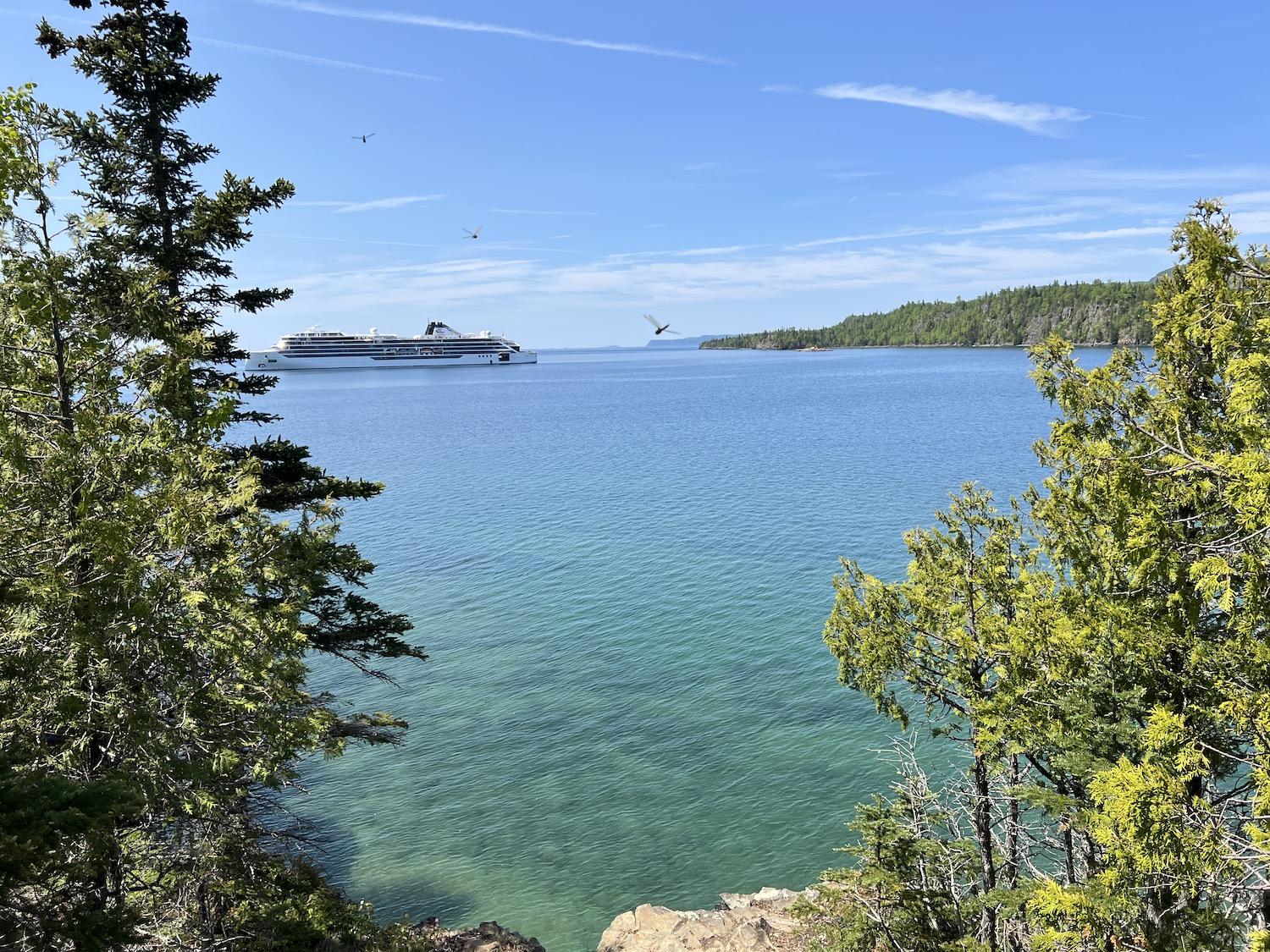
A conceptual design of how the Administration and Visitor Centre for Lake Superior National Marine Conservation Area will look/Parks Canada
Canada has announced more than $37 million ($27 million USD) in federal funding for the contract award to construct the Administration and Visitor Centre for Lake Superior National Marine Conservation Area.
Slated to open in 2026, this landmark project in Nipigon, Ontario, will serve as Parks Canada's primary operations base while sharing the rich history of Indigenous peoples and coastal communities in the area.
This net-zero carbon project supports commitments in the Greening Government Strategy to net-zero emissions by 2050. It will be the first Parks Canada administered building to be built to Passive House Plus certification, and net-zero carbon standards and will demonstrate innovation and leadership in sustainable building practices.
The building has been designed, and will be constructed, using sustainable practices such as superior thermal storage due to its super-insulated envelope, optimized site orientation, sustainable material selection and on-site energy generation. By harnessing renewable energy sources, it will meet its own energy needs while also reducing long term energy costs.
The construction contract was awarded to Finn Way General Contractor from Thunder Bay following a competitive process. The contract includes initiatives that will promote employment opportunities and use of suppliers and contractors within local Indigenous communities.

Liam Giffin is the visitor experience product development officer for the Lake Superior National Marine Conservation Area/Jennifer Bain file
“Climate change is one of the greatest global challenges of our time and this investment highlights government leadership in reducing greenhouse gas emissions and delivering a low-carbon, climate-resilient and clean-growth economy,” Steven Guilbeault, minister of Environment and Climate Change and Minister responsible for Parks Canada, said in a news release.
Added Patty Hajdu: “This project is an exciting blend of conservation, economic development through tourism, and sustainable design.” She’s the minister of Indigenous Services, Minister responsible for the Federal Economic Development Agency for Northern Ontario and Member of Parliament for Thunder Bay-Superior North.
Lake Superior National Marine Conservation Area, once fully established, will be about 10,000 square kilometres [~6,214 square miles] in size, occupying almost 13 percent of the largest freshwater lake in the world by surface area.
It protects rich, natural and cultural heritage and contains remarkable features, including:
• The connection between Indigenous Peoples and the lands, waters and resources spanning thousands of years.
• The cultural heritage of First Nations, Métis and Euro-Canadian fur-traders and settlers.
• More than 70 fish species and rare arctic-alpine plants.
• Unique geological formations of columnar basalts, shatter cones and sea caves coupled with dramatic terraced landscapes, Superior Shoals, and some of the world’s oldest known rocks.
• Seventy known archaeological sites varying from pictographs to grave sites, shipwrecks and more.

The Viking Octantis anchors in Lake Superior National Marine Conservation Area waters just off Sleeping Giant Provincial Park in Ontario/Jennifer Bain file
The Administration and Visitor Centre will be a net-zero energy building, with a goal of net-positive energy production that would allow for surplus energy to be used for charging of fleet and public electric vehicles.
The building is designed with a 100-year service life that will operate with reduced maintenance and energy requirements, contributing to long-term environmental, asset, and financial sustainability. With geothermal and photovoltaic energy generation, ongoing maintenance and operation of the building will be less susceptible to the rising costs of fossil fuels.


